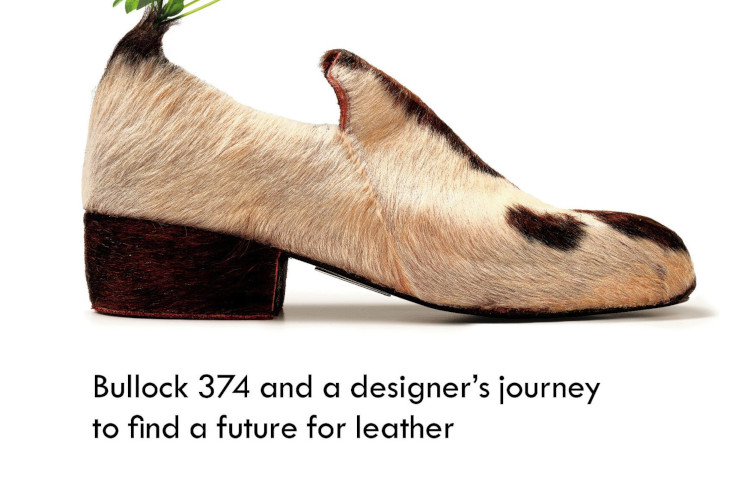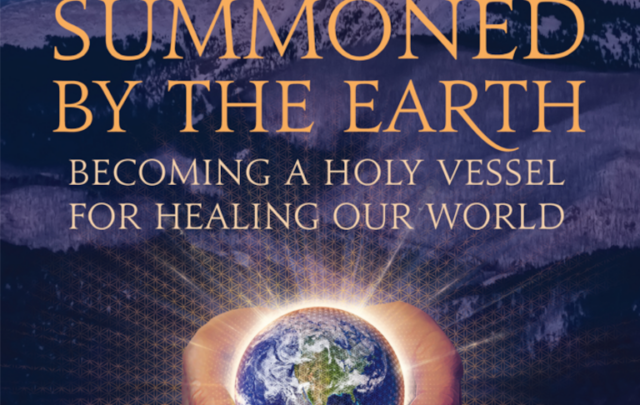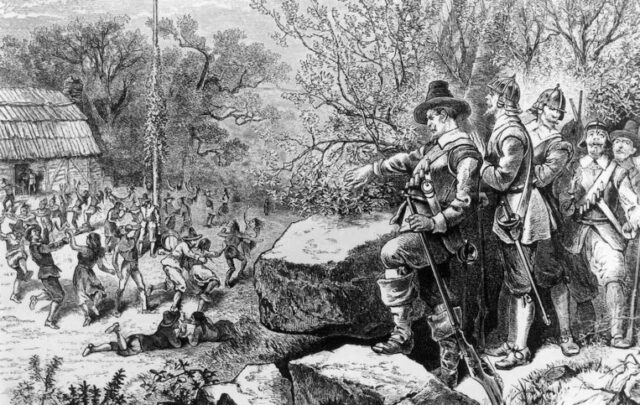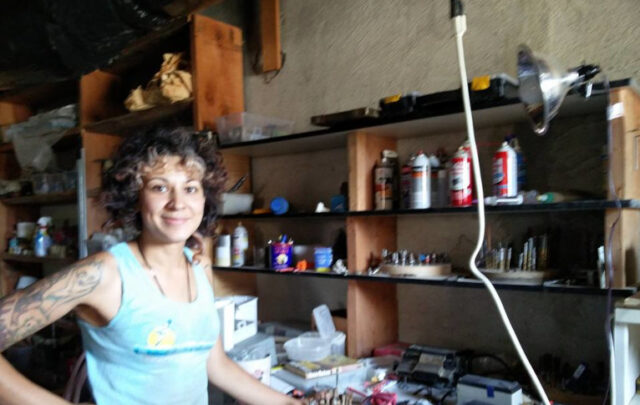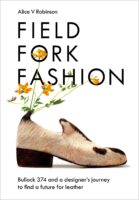 The following extract is from Alice V Robinson’s new book Field, Fork, Fashion: Bullock 374 and a Designer’s Journey to Find a Future for Leather (Chelsea Green Publishing, Oct 2023) and is reprinted with permission from the publisher.
The following extract is from Alice V Robinson’s new book Field, Fork, Fashion: Bullock 374 and a Designer’s Journey to Find a Future for Leather (Chelsea Green Publishing, Oct 2023) and is reprinted with permission from the publisher.
FROM FASHION TO FIELD
In the beginning, I just wanted to make a handbag. But, after questioning what connections this simple item could hold, I became aware that I needed to see the bigger picture. So, on 9 October 2018, I bought a bullock.
Fashion is dependent on agriculture, and luxury fashion is especially so. From fields of cotton to wool, cashmere and silk, some of fashion’s most coveted materials are derived from a farmed natural resource. In the case of leather, it begins as the skin of an animal that (with the exception of exotics) has been reared for food by a global meat industry. This inescapable link to animal agriculture, and the associated negative impacts on animal welfare and the environment, contribute to leather being one of the most controversial materials used in fashion today.
When I was studying for a degree in accessory design, leather was the most prevalent material used in the sector many of us endeavoured to become a part of. Working with leather hadn’t been a requirement, it was more of a logical assumption that we would choose it.
Leather’s famed attributes in terms of beauty, durability and versatility are unparalleled. For all those reasons it was the material of choice for the high-quality accessories I intended to design. But, as I began to consider its use, I found myself asking questions, starting with: ‘Where has it come from?’
I grew up in Shropshire, the daughter of a farm vet. I had been privileged to live alongside farmers and to experience the animals and places that produce our food. This exposure influenced what I chose to eat. Until I started working with leather, however, I had seen no relationship between my upbringing and my interests in fashion.
Such a relationship did not exist in leather, but I knew there must be a story to tell. The material’s connection to agriculture provided me with an opportunity to move from working as a designer in my own silo to learning from a local nature-friendly farmer. By looking beyond the cultural capital of leather goods, and the value bestowed upon them by a brand, I hoped to see instead how the interests of fashion intersected with those of food and farming.
My new book Field, Fork, Fashion is the story of my efforts to explore the reasons for leather’s lack of traceability to the type of agriculture it came from, to understand what such a relationship could mean for design, sustainability and fashion systems – and ultimately to reconnect fashion with farming.
HOW I GOT THERE
I fell in love with designing and making clothing long before I began to ask questions about the impact of the fashion industry. I applied to the London College of Fashion’s FdA Designer Pattern Cutting course because, as I understand now, it was not so much the creation of items deemed ‘fashion’ that I enjoyed, but the act of transformation from cloth to a 3D form that provides protection, identity, confidence, joy.
A year into my BA degree in Womenswear at Edinburgh University, I had the opportunity to move to Scandinavia for the summer and work at an international brand for three months. It was an illuminating experience, seeing at first-hand how the ‘fast’ stream of fashion operated. With sharp focus, we would sift through the most recent catwalk shows. Our job was to react quickly and bring these new and emerging trends from the few to the masses. The scale of the company was unlike anything I’d ever comprehended, despite having been a loyal customer for years.
Overproduction, excessive consumption and the externalising of true costs in fashion weren’t things I thought deeply about until I was prompted to do so during my Master’s degree in Womenswear Accessories at the Royal College of Art. This degree introduced me to new and challenging conversations about fashion and our head of programme, Zowie Broach, nurtured and encouraged us to find new ways of thinking. In our cohort of 55 students, we discussed where we felt conflicted and motivated to respond to the industry as it was. And for two years we had the freedom to explore, make mistakes and be radical with our concepts.
During that time we were encouraged to question everything, to consider the systemic issues of the industry and to suggest new ways of thinking to address them. We were encouraged to be hopeful, to use fashion and design as the tool for which it always has been, an embodiment of culture, craft and connectivity. And to think about how the future landscape of fashion would look through these lenses.
A MATERIAL CHANGE
Moving from a BA to an MA had also brought with it a change in focus for me, from pattern cutting and material development of shirts, coats, trousers and dresses, to a specialism in accessories, focusing on bags, belts, wallets and the like. This had taken me, in a literal sense, from a materials closet of cottons, silks, linens, viscose and polyester-blends to a storeroom at the RCA of hardware fittings, grey board, rope, glue and roll upon roll of leather.
Every type of leather that you could imagine was stacked on shelves in bundles: thick and supple to paper-thin and parchment-like, and in a wide-ranging palette of colours. Printed, fluorescent, embossed and debossed, snakeskin patterns and false grains. There was full fleece, short hair, soft fur and scales.
New terminology was introduced to me: full grain, corrected grain, genuine leather, split leather, sole leather, suede, nappa, veg-tan, chrome, crust, aniline, semi-aniline, pigmented and nubuck. From a creative perspective, what lay inside that store cupboard provided infinite inspiration. Here was a material that seemed to have few limitations in its performance capabilities and an unending capacity for transformation.
This first year introduced me to a material that I’d encountered my whole life, yet one I had given very little thought to. Only as I began to work with leather as a designer, did I begin to see it differently.
Unlike the woven textiles in our store cupboards, leather did not come with a composition breakdown. For that we had independent leatherworker Stephanie Freude, our magnificent technician. Pulling snippets and taking swatches from the rolls of possibility before me, I would ask: ‘What is this?’
Many of the answers were straightforward. If a piece was really thick, say more than 3mm, then it must have come from a large animal. If it were thin, around 0.5mm, then it was more likely to have come from a smaller animal. As hides and skins are derived from animal agriculture, we could deduce that the leathers belonged to one of the four main species raised for meat or dairy around the world: cattle, sheep, goats or pigs.
I was introduced to new terminology; words such as bovine, ovine, caprine, hides and skins. When the animal origins could not easily be discerned, I learned to look for tell-tale signs to guide my enquiries. Leather that had been produced from pigskin, for instance, will often still have perforation marks where thick hairs once sprouted – although the skins might be similar in size to that of a sheep or a goat, the hairs on those are much finer and therefore the holes are less detectable in finished leather. The guessing game gets harder as pattern pieces are cut out from a whole hide or skin.
Spreading them out on the pattern-cutting table, I began to learn how to collect information that would give me more of an image of the animal. This was easier for the smaller skins, as they were usually uncut. I could see that the two protrusions on either of the longer sides were where the front and back legs had been. And an extension at the shorter end of the skin could be identified as the neck. If the leather had not been too heavily coated in a pigment finish, then a faint shadow and denser grain down the centre of the skin would denote the direction the spine had run. Scrunching the leather between my fingers and pulling from the spine back towards the belly, I could feel how the structure of the skin changed, from being tighter in the centre at the spine, then gradually becoming looser towards the belly. Throughout, fluidities that reflected the movement of the animal’s body were evident in the leather. It was impossible, I found, not to confront leather’s ingenuity without facing its innate animality.
Unlike the materials I’d worked with before, leather didn’t come by the roll. It did not have a warp and weft, and deciding where to place pattern pieces did not depend on whether I wanted to avoid cutting on the bias or not. My design decisions were impacted by the reality that leather comes from an animal and, as with all things natural, nothing is identical. Designing with leather meant gaining an understanding of different animal species. Each part of the body had its own structure, which would therefore affect where I would place my designs – did I need stretch, did I need tightness, did I need somewhere in between?
In addition to considering placement, I learned that not all types of leather perform the same way either. For instance, leather made from a cattle hide will make a durable seat in an aeroplane, but not provide you with silky soft gloves to fly it, for those you’d want a sheep. More specifically, you’d want a sheep breed that grows a greater ratio of hair fibres to wool fibres because numerous fine wool fibres will break up the skin structure, and this provides maximum fluidity.
Still, acknowledging the raw materials’ animal origins was only half of the education I needed.
LEATHER BEGINS AT A TANNERY
Six months into our Master’s degree course, many of us had just begun working with leather for the first time, so we travelled to the Institute of Creative Leather Technology, the micro-tannery on the campus of Northampton University, one of a kind in the UK and one of only a few throughout Europe. The trip was to introduce us to some of the processes behind making the material.
Our morning was spent in a classroom where we engaged in leather chemistry for beginners and, in the afternoon, we were immersed in the tannery, playing with colour, texture and temper (the suppleness or stiffness of the material).
I witnessed three pieces of leather cut from the same hide go through individual transformations. With small changes in application each morphed to become entirely distinct. One application of a gloss fired through the spray gun gave a piece a high shine reflective surface, another sprayed dye that brought consistency to the colour, and the third went through a revolving piece of sandpaper which resulted in a nap as soft as icing sugar.
The day had begun with an explanation of the historic methods of creating leather, first with the use of oils, barks and leaves to more modern innovations of salts, minerals and synthetic tannins. We were given an education in the array of techniques used to transform degradable raw materials – hides and skins – into adaptable and alluring leathers. Each of us donned lab coats, protective glasses and wellies to see skins sloshing around in drums filled with ingredients that had been chosen to enhance or improve performance in the finished materials. I realised that this work combined technical skills with intellect, an appreciation of craft and a deep respect for the biological ingenuity of a natural fibre.
Thanks to advancements in leather chemistry and novel approaches of applying it, the opportunities to innovate and manipulate are near limitless. I learned that while the origins of the raw material dictated qualities in the leather to an extent, there were still innumerable possibilities for how the material could eventually look and perform when applied in designs. Accompanying these different levels of intervention and chemical manipulation, which could also give uniformity and standardisation to this natural material, there were degrees of sustainability to consider as well.
But the most immediate question on my mind at this point was sourcing. Where did this material come from? And how would understanding its provenance direct my design decisions?
LOOKING FOR A CONNECTION
I began to visit leather merchants, asking questions whenever I could about the origins of these materials. In doing so I began to understand the global and complex picture of leather production.
First, hides and skins are collected in a raw state from an abattoir. They are sorted, preserved and accumulated in large volumes. They can then be moved, sometimes from country to country or even continent to continent, during three main stages: either as a raw material, when part processed or as finished leather.
Leather-making businesses often specialise in producing a particular type of finished material, for example, sheep shearling or shoe soles. As the raw material needed to create that type of leather may not be locally available or in the volumes necessary, they must purchase it from large globalised supply chains.
For example, the United States and Brazil produce the largest quantities of beef globally. While the USA is the largest global producer of beef, it is also a leading exporter of hides and, as a consequence, not the highest producer of leather. China, however, is the third largest producer of beef in the world, while Italy is only the third largest in Europe. Despite this, both countries’ tanning and manufacturing capacities exceed their domestic supply of raw materials and therefore rely on imports from countries such as the USA to provide them with greater volumes. These imports then enable China and Italy to be some of highest producers of finished leather globally.
Throughout the whole transformation from raw to finished leather, ownership of the material can change hands multiple times before reaching the designer. While a hide may have come from an animal in one country, the leather it produces may have been created in another. I began to realise that asking from where this material originated was far from straightforward to answer.
Instead, what became clear was that the success of this global trade is in part due to the intrinsic versatility of these abundant raw materials. And yet, despite this, not all hides are turned into leather. Estimates suggest that globally 45 per cent of hides are going to waste, with over 5 million cattle hides produced in America unaccounted for in the leather value chain. Along the journey from farm to abattoir to finished leather, the material’s value transitioned. From a fundamental essential to life, a raw material and tradable commodity, to a finished material crafted by the leather industry.
So I started to look for information beyond the name of the tannery. Beyond the country or region that they bought their raw materials from. What food, and therefore agricultural, system had these hides been a part of?
My dad’s job as a vet in a rural community meant that when I was growing up we had an awareness of where our food came from. Occasionally, we’d experience a reward for his work – a gift of a joint of beef or mutton from a farmer. Access to food produced locally came with a connection to the farm and this connection was imbued with value; it influenced the buying decisions we made. Looking at all of the leathers in front of me, I wondered about this missing link, and what stories had been lost? And if that story could be shared, what sort of relationship would it reveal between our food and clothing?
These questions prompted me to consider leather from this perspective.
WHAT IS BEAUTY?
For two years, my commute to the Royal College of Art involved travelling through one of the most opulent streets in London, Sloane Avenue. Twice a day, my journey provided a sumptuous encounter with luxury fashion’s finest. Sitting on the top deck of the bus, where I could get the best view, I’d snoop through the window and appreciate the bags on top of polished glass cabinets. Each brand’s name debossed or engraved on stunning craftsmanship stated its claim.
Many of the leathers behind the shop windows were impervious. Glossy coatings hid any evidence of imperfection. Multiples of the same design sat in stores on every continent, each providing identical offerings. These pieces are seen as the pinnacle of luxury fashion, but what set them apart? I began imagining that they were interchangeable. Laid out on an assembly line before the brand name was added or label stitched in. What had come before their adopted identity?
I began to wonder about these items, viewing them not as products of the brand but as an extension of something else: agriculture. What was this story and how could it be framed, presented… and valued?
Informed by the knowledge that leather originated in food systems, I aimed to explore how that connection could influence my work as a designer. I decided that in order to find answers to my questions, I’d need to follow it as a product from the field and confront its transformation into food and fibre.


